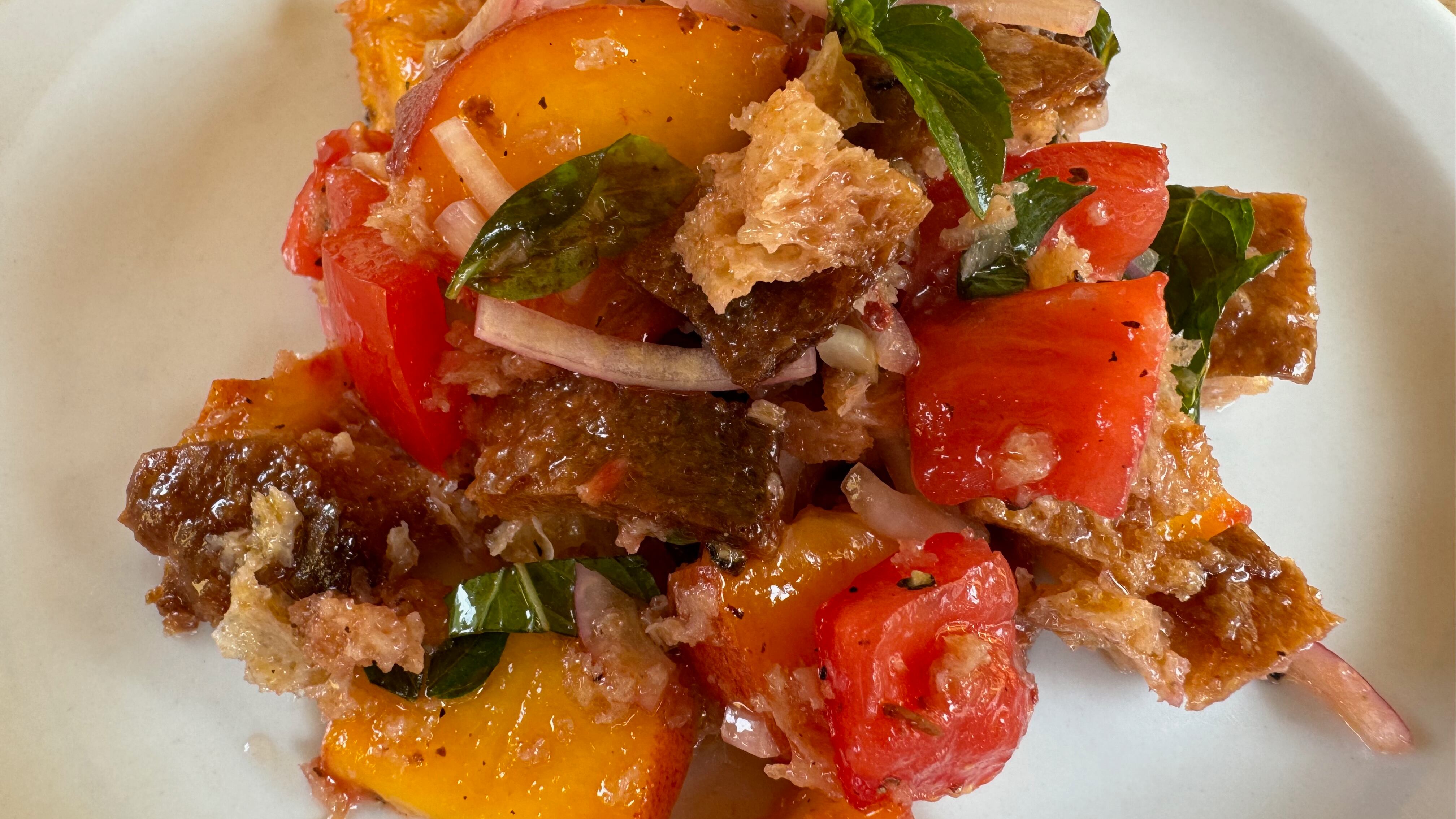Jim Dixon wrote about food for WW for more than 20 years, but these days most of his time is spent at his olive oil-focused specialty food business Wellspent Market. Jim’s always loved to eat, and he encourages his customers to cook by sending them recipes every week through his newsletter. We’re happy to have him back creating some special dishes just for WW readers.
Growing wheat dates back more than 10,000 years, and recipes using stale bread have been around almost as long. Before the ancient Egyptians inadvertently discovered how yeast could make their traditional flatbreads taste better (and go with the beer they stumbled upon at the same time), stale pita-like breads were fried or baked, mixed with vegetables, and flavored with things like sumac and pomegranate molasses.
The Romans took leavened bread to the next level with large bakeries churning out loaves to feed thousands, and then there was even more bread getting stale yet was too precious to throw out. The culinary history is a little murky, but it’s likely that Italians started making an early version of panzanella—a simple dish of old bread, onions, vinegar, and maybe some wild greens—around the same time.
While tomatoes didn’t show up in panzanella for several centuries, the Romans did grow and use peaches. An old recipe attributed to Apicius combines the stone fruit with cumin, black pepper, vinegar, olive oil, and the funky fish sauce garum. Did those early Italians add peaches to their bread salads? We’ll never know. But the fuzzy-skinned tree fruit shares a sweet acidic flavor profile with tomatoes, and they taste great together, especially in panzanella.
Contemporary recipes tend to use toasted or grilled bread, often rubbed with garlic before being cut into cubes. But the traditional approach calls for soaking dried-out bread in water until it softens and squeezing out the excess. The result is more like polenta than croutons, and though it may not seem very appealing, it makes the best panzanella.
Recipe
- 3–4 slices rustic bread
- 2–3 ripe peaches
- 2–3 good tomatoes
- 1 red onion, very thinly sliced
- 1 handful fresh basil, mint or arugula*
- 2 tablespoons red wine vinegar
- ⅓ cup extra-virgin olive oil
- Kosher-style sea salt
- Freshly ground black pepper to taste
*I like to use a combination of herbs.
Let the bread dry out completely by leaving it exposed to air on your counter for a few days. If you don’t have time for that, dry it in the oven at 200 degrees for an hour or so. Soak the dried bread in cold water for 15–20 minutes or until it gets soft, and then squeeze out and discard the excess water. Tear the bread apart and place the pieces in a large bowl.
Cut the peaches and tomatoes into bite-size pieces. (I don’t peel the peaches.) Coarsely chop the onions and the herbs. Add them all to the bread, along with the vinegar, oil and a good pinch of salt. Mix well and taste, and then add more salt if needed and the black pepper if desired. I think this tastes best if allowed to sit at room temperature for a few hours.

